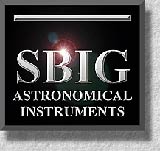The Owl Nebula M97 is one of the fainter objects in Messier's catalog, discovered by Pierre Méchain on February 16, 1781. In his description of this object, Charles Messier also mentions two other nebulous objects that he (and Méchain) have seen at about the same time, but which he had not added in his printed catalog version of 1781 (in the Connoissance des Temps for 1784). As the description is obvious and he added positions by hand in his personal copy, as well as descriptions in his manuscript personal pre-print version, we now know that he had observed the objects M108 and M109. Admiral William H. Smyth first classified it as planetary nebulae in 1844. The name "Owl Nebula" goes back to Lord Rosse, who first used it in 1848; see his drawing. In 1866, William Huggins recognized its nature as a gaseous nebula from the observation of its spectrum, where he discovered two spectral lines.
M97 is one of the more complex planetary nebulae. Its appearance has been interpreted as that of a cylindrical torus shell (or globe without poles), viewed oblique, so that the projected matter-poor ends of the cylinder correspond to the owl's eyes. This shell is enveloped by a fainter nebula of lower ionization. The mass of the nebula has been estimated to amount 0.15 solar masses, while the 16 mag central star is believed to be of about 0.7 solar masses. Its dynamical age is about 6,000 years. (from Stephen J. Hynes, Planetary Nebulae).
As often for planetary nebulae, the Owl is significantly brighter visually (Machholz: 9.7 mag, Hynes: 9.9 mag) than photographically (about 12.0 mag), as most light is emitted in one green spectral line (see our Planetary Nebulae page). Its distance is uncertain; the Sky Catalog 2000 has 1,300 light years (400 pc), I.S. Shklovsky 1,430, O'Dell and Kohoutek independently found 1,600 in the early 1960s, Cudworth (1974) 2,600 (our value), Becvar's Atlas Coeli Catalog 7,460, Voroncov-Vel'jaminov published 8,150, Kenneth Glyn Jones gives 10,000, and Kaufmann has 12,000 light years (some of these values quoted from Burnham).






